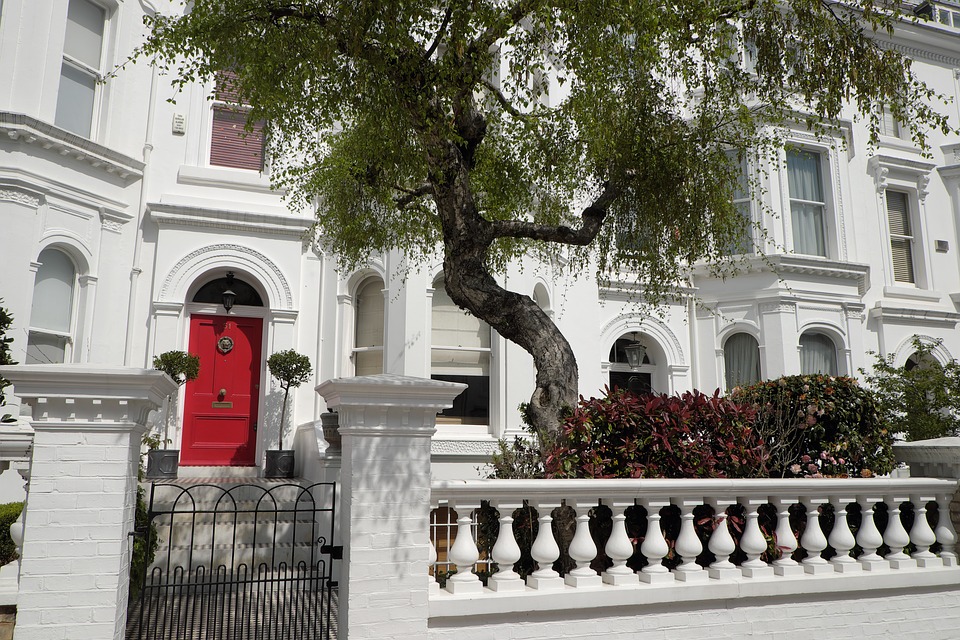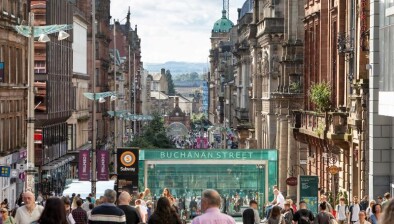England: High London housing costs linked to decline in birth rate
A new study has shown a correlation between housing costs in London and the number of births in the capital since 2010.

The study by GMB London Region found that those living in boroughs with high housing costs are having fewer children than those where housing is more affordable.
In January last year, the average house price in Kensington and Chelsea was £1,463,378.
In the eight years since 2010, the number of births per year in the borough has fallen by 26.29%, from 2,221 to 1,637.
Similarly, Richmond Upon Thames which had an average house price of £639,200 in January 2018 and has seen a 22.79% decrease in the number of births since 2010.
In Lambeth, where the average house price was £514,176, has seen a decrease of 20.53% in the birth rate.
In Westminster, where the average house price was £1,116,111, has seen a decrease in the birth rate of 17.95%.
In Camden, the average house price was £859,593, saw birth rates decrease over eight years also by 17.95%.
Meanwhile, boroughs with lower average house prices have shown a smaller decrease in birth rates, and in some cases have seen an increase.
In Havering, the average housing price in 2018 was £365,934, while in the eight years from 2010, birth rates went up by 17.39% from 2,817 in 2010 to 3,307 in 2018.
In Bexley, houses prices averaged £340,598 whilst the birth rate increased by 1.27%.
In Barking and Dagenham, which has the lowest average house price in January 2018, £292,915, the birth rate decreased by just 0.78%.
|
| London | January 2018 Average House Prices (£) | 2010 births | 2018 births | 2010-2018 change |
| 1 | Kensington & Chelsea | 1,463,378 | 2,221 | 1,637 | -26.29% |
| 2 | Richmond upon Thames | 639,200 | 2,992 | 2,310 | -22.79% |
| 3 | Lambeth | 514,176 | 4,929 | 3,917 | -20.53% |
| 4 | Ealing | 473,631 | 5,861 | 4,732 | -19.26% |
| 5 | Southwark | 492,039 | 5,131 | 4,181 | -18.51% |
| 6 | Westminster | 1,116,111 | 3,059 | 2,510 | -17.95% |
| 7 | Camden | 859,593 | 3,060 | 2,519 | -17.95% |
| 8 | Hammersmith & Fulham | 742,878 | 2,773 | 2,314 | -16.55% |
| 9 | Haringey | 549,660 | 4,456 | 3,756 | -15.71% |
| 10 | Wandsworth | 596,879 | 5,546 | 4,697 | -15.31% |
| 11 | Merton | 517,135 | 3,523 | 3,018 | -14.33% |
| 12 | Kingston upon Thames | 485,525 | 2,312 | 2,025 | -12.41% |
| 13 | Hounslow | 404,048 | 4,433 | 3,947 | -10.96% |
| 14 | Brent | 494,515 | 5,240 | 4,705 | -10.21% |
| 15 | Lewisham | 408,684 | 4,982 | 4,504 | -9.59% |
| 16 | Greenwich | 385,851 | 4,674 | 4,228 | -9.54% |
| 17 | Newham | 349,429 | 6,262 | 5,678 | -9.33% |
| 18 | Enfield | 395,284 | 5,122 | 4,672 | -8.79% |
| 19 | Barnet | 538,718 | 5,541 | 5,111 | -7.76% |
| 20 | Sutton | 377,963 | 2,675 | 2,472 | -7.59% |
| 21 | Waltham Forest | 441,468 | 4,823 | 4,468 | -7.36% |
| 22 | Hackney | 557,025 | 4,677 | 4,384 | -6.26% |
| 23 | Islington | 639,371 | 2,952 | 2,793 | -5.39% |
| 24 | Tower Hamlets | 465,625 | 4,565 | 4,381 | -4.03% |
| 25 | Hillingdon | 409,263 | 4,192 | 4,075 | -2.79% |
| 26 | Harrow | 474,005 | 3,503 | 3,582 | 2.26% |
| 27 | Croydon | 374,441 | 5,536 | 5,425 | -2.01% |
| 28 | Bromley | 445,504 | 4,070 | 4,005 | -1.60% |
| 29 | Barking & Dagenham | 292,915 | 3,729 | 3,700 | -0.78% |
| 30 | Bexley | 340,598 | 2,993 | 3,030 | 1.27% |
| 31 | Redbridge | 416,712 | 4,462 | 4,539 | 1.73% |
| 32 | Havering | 365,934 | 2,817 | 3,307 | 17.39% |
Warren Kenny, GMB regional secretary, said: “These figures show that there is a direct correlation between the level of housing costs and the change in the numbers of babies born across the different areas of London. The higher the housing costs in a borough the greater the decline in the numbers of babies born since 2010.
“Many lessons flow from these high housing costs and the toll on the numbers of babies born. One lesson should be on the policy of how to provide homes for lower-paid workers priced out by high housing costs.
“Providing homes for rent at genuinely affordable rents is the only viable solution to provide homes for lower-paid workers and their families across the whole of London. Without the availability of homes provided by the council at genuinely affordable rents, these workers and their families are simply not able to even aspire to live in the areas where they work.
“It should shock polite society that it is lower-paid residents on council estates, supported by the likes of GMB, who are facing long battles with Labour councillors and housing associations that want to demolish these estates and use the land to increase the supply of expensive homes out of the reach of the lower-paid workers who currently live on them.”
He added: “It was Clarion Housing, that sought to demolish the 4 acre Sutton estate in Chelsea and replace it with luxury housing. This is an area where average house prices are £1.5m.
“The bosses of these housing associations and the Labour councillors who are behind the rush to regard the land on the estates, which is housing the lower-paid workers and their families, as a giant cash machine should be thoroughly ashamed of what they are doing to these families.
“They wouldn’t dare suggest that a street full of the homes of the middle classes should be compulsory purchased for redevelopment. Yet all over London, they have no shame in doing this for the homes of the lower-paid families. Over 100 estates are facing demolition. This should stop until the residents consent to the sale of their homes or agree to give up their secure tenancies.”








